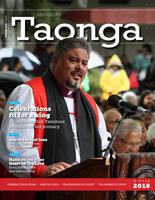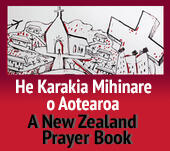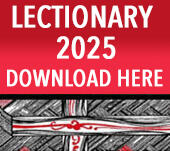
Rediscovering the gospel in Matthew’s narrative
As this year's featured gospel-writer in the Revised Common Lectionary, Matthew gets his turn to tell his distinctive version of the story of Jesus and the birth of the Christian faith, without interruption from the other gospel-writers (apart from Easter when John is allowed to elbow everyone else aside, as usual).
Are you looking forward to Matthew’s company, or is the prospect rather ho-hum? Worse, isn’t there something rather threatening about him, like the visit of a disagreeable uncle who must be honoured but whose stories are not only rather long-winded but embarrassingly intolerant in this day and age? Let the old guy have his say, but don’t tell the neighbours we listen to him while we look forward to his eventual departure?
The challenge for us all, especially those who must preach from the texts week by week, is to find some ways of rediscovering the gospel, the really good news within Matthew’s narrative. Maybe we could start by remembering that for him it was good news, all of it, and to ponder what that meant 2000 years ago, before we try to find its significance here and now. Already I’ve identified four major themes I want to dwell on next year, so I offer them as possible fire-lighters.
The first is fulfilment, which the evangelical scholar R.T. France identifies as the central theme of Matthew. All that was promised in the scriptures of Israel has now been fulfilled in the story of Jesus and his church.
There are two ways to take this message, and one is deadly boring: finding a whole series of scripture references that show the law and the prophets and holy writings of Israel were really talking about events in Jesus’ lifetime. Boring because it is all done and dusted – the Christians were right, the Pharisees and their followers wrong, and God has long moved on from all that. And deadly because if we think this is what Matthew was on about we also have to say that his exegesis of scripture was really bad and his argument seriously flawed.
But maybe “fulfilment” means something else for Matthew. Whenever he highlights correspondences between scripture and events in the life of Jesus and the first-century church, which he does often, he is talking about his own time and place. Rather than attempting an exegetical exercise of proving that the scriptural text is really (and only) about Jesus, he is excited to discover just how much light those ancient writings throw on the events he has experienced and the situation his church finds itself in.
As E.D.Hirsch points out, this way of reading a text is about discovering its significance rather than its meaning. And if we’re true to Matthew, we too will get excited about discovering fresh significance in holy scripture as it sheds light on our own situation. Good news: ancient scriptures fulfilled in Aotearoa New Zealand in 2008!
A second major theme is Matthew’s preoccupation with righteousness. Not Paul’s concept, a status in God’s eyes gifted to me through my faith in Christ, but the other sort (which Paul also knew all about) – the joy of living your life in obedient response to the grace and light of God’s will expressed in scripture.
We meet this concept, and the spirituality that sustains it, throughout the Psalms (eg., 1, 19, 119). This concept lies at the heart of Judaism, ancient and modern, in the ceaseless study of Torah as the centre of Jewish piety, the Jewish passion for commandments handed down from Sinai through Moses and a long tradition of lawgivers. One of Matthew’s central concerns is that this treasured tradition should not be lost to the church in its new separate identity. Woe to those who teach others to disregard the smallest commandment! (5:17-20)
Other New Testament writers may express a view that the two great commandments replace the law of Moses, but Matthew, as a Jewish Christian, is having none of this. Rather than making the law redundant, these two commandments serve as central principles for interpreting and ensuring the ongoing validity of Torah, the great body of halakah derived from Moses and the prophets.
By and large, Matthew lost this argument with the wider Christian movement, and the option of a genuinely Jewish Christianity disappeared within the first centuries of church history, labelled as heresy by the same “catholic” church that delighted in claiming his gospel as its favourite teaching document.
What an irony! I shall reflect on it during the coming months, along the following lines. The status of Matthew’s gospel within the Christian canon means we are bound to accept that the option of a Torah-reading but Christ-centred Christianity, rejected by the later church, was in fact authorised by God.
Subsequent development of Torah as a living system of law-rich spirituality was undertaken only by the Pharisees and their rabbinic successors, and we now look in on the treasures they amassed as outsiders. Matthew would be mortified! This sacred task was for the Christian scribes to undertake, not their rivals and opponents (13:52). But it didn’t happen, and never will, and we are the losers because Christianity became so thoroughly Gentile. We can borrow from this treasure trove, but it will never be ours.
Further, it may be fruitful to draw a local parallel. As a Pakeha Christian in Aotearoa, I’m increasingly aware of Maori tikanga, a great body of customary law (and lore) governing every aspect of life by relating it to the central notion of tapu, sacredness. Others have pointed out the many similarities between this tradition and Jewish Torah. As an outsider to both traditions, I hear Matthew’s voice quietly warning us not to repeat our earlier mistake of suppressing rather than honouring a spiritual diversity blessed by God.
A third element of Matthew’s good news is shared with the other two synoptic writers. Like them, he persists in portraying Jesus as a Galilean prophet, an outsider to the religious and civil hierarchy centred in Jerusalem. Jesus may have connections in Judea, but he doesn’t belong there, and neither does the movement that follows him. His mission finds initial success in Galilee, encounters increasing opposition and strife as he heads towards the confrontation in Jerusalem that is climaxed in his crucifixion, and picks up again in Galilee after the resurrection, from where the worldwide mission is launched.
The Jesus presented by Matthew as the great teacher of Israel, successor to Moses, is also its greatest critic. In the face of entrenched power and privilege, he is always the radical voice denouncing the status quo. His teachings, including the Sermon on the Mount, portray a different way of life and a different set of social and economic arrangements in which injustices are put right and God’s people live together as brothers and sisters, differing in their gifts but equal in value and authority.
All of this means that in the coming year I expect Matthew’s gospel to disturb me by pestering me with questions about my own powers and privileges. I expect to hear a voice constantly telling me that God wants more from me than I have grown accustomed to giving. And this will be good news, ultimately, because its purpose is to invite me into a new way of being human, that liberating state of being Matthew calls “the kingdom of heaven”.
My final theme is sobering. One aspect of Matthew’s gospel most of us find difficult to accept is the shrill tone he has Jesus use in his accusations against his main opponents, the Pharisees (23:1-36 in particular). In this gospel, they are implacable foes of Jesus at every turn, and end up calling down a curse on themselves and their descendents (27:25 in the light of 23:29-36). We would label this blatant anti-Semitism if it were not actually a fight between two groups of Jews.
Scholars agree that this gospel reflects a very recent split between Matthew’s community of Jewish Christians and their fellow Jews, the Pharisees . This explains his strident tone, but do we have to excuse it, let alone take it as a model? Surely not – his own sermon on the mount forbids it!
What, then, does God want us to do with this aspect of Matthew? Our bishops soon will gather at Lambeth, with the main item on the agenda being a threatened schism within the Anglican Communion. As they, and we back home, stare into such a chasm and contemplate going separate ways internationally and within our own province, dioceses and even parishes, Matthew will be standing quietly alongside us bearing witness to the pain of all such partings. May the distress and anger in his words, as we collectively hear him for a year, give us all pause. Separate ways – do we really want to go there? I hope not.
Matthew’s good news – I’m getting ready to hear it again.
The Rev Dr Howard Pilgrim is Vicar of Gisborne. In the next issue of Anglican Taonga he will begin a regular column on Biblical studies.
REFERENCES
R.T. France, The Gospel of Matthew, The New International Commentary of the New Testament, Eerdmans, 2007, p.10ff.
E.D.Hirsch, Validity in Interpretation, Yale University Press 1967, pp.1-23.
France, Matthew, p.847. The best commentary for a substantial treatment of Matthew’s Jewish heritage is W. D. Davies and D. C. Allison, Matthew, 3 vols., T&T Clark International 2004., or the shorter version by the same publisher.
Besides the above commentaries, see R. H. Gundry, Matthew: A Commentary on his Handbook for a Mixed Church under Persecution, 2nd edn., Eerdmans, 1994.

















Comments
Log in or create a user account to comment.